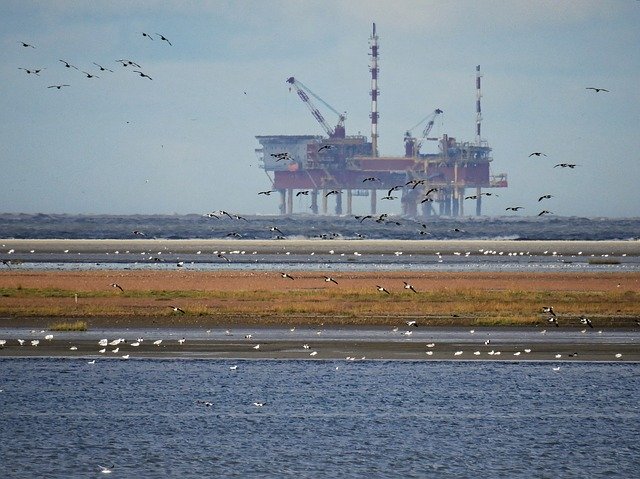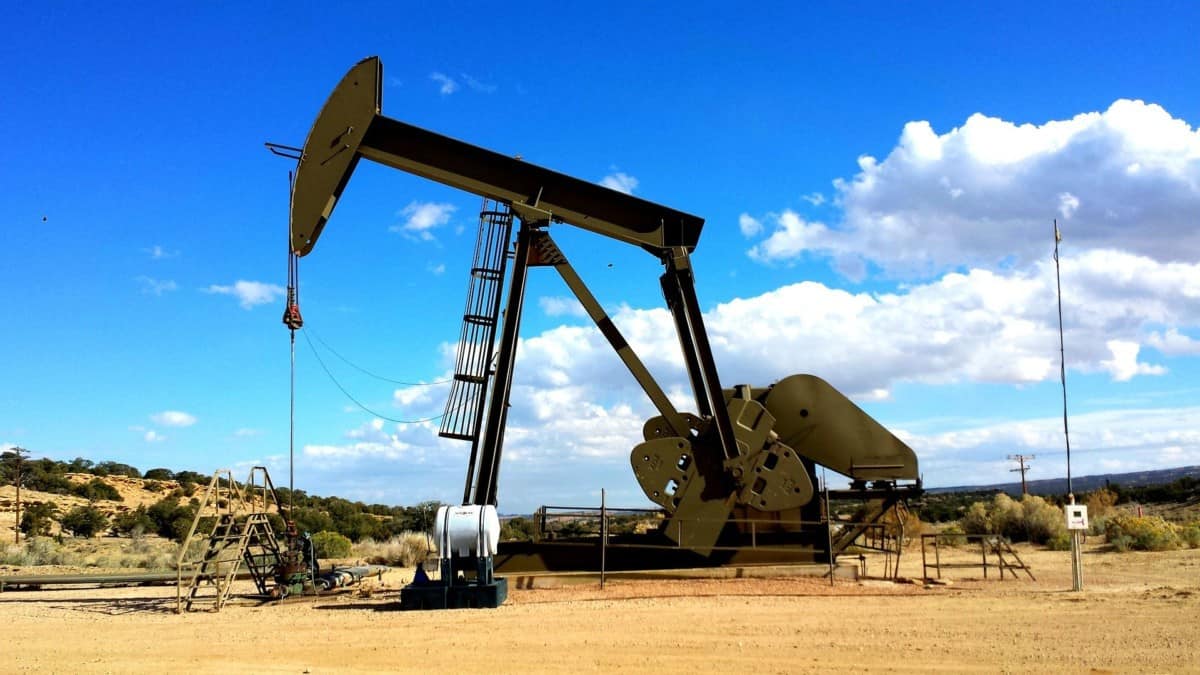Non Renewable Resources Definition
These are finite energy sources that have limited supply. Once they have been consumed, non-renewable energy sources can’t be replaced in many lifetimes to come. This means that they will eventually run out if we continue using them.
The most commonly used non-renewable energy sources come from fossil fuels including natural gas, petroleum, and coal. However, nuclear energy also belongs to this category. Below is an overview of different types of non-renewable energy in addition to their pros and cons.
Non Renewable Energy Sources
There are four main types of non renewable energy sources found in different parts of the earth. They include:
1.Coal
This is a brownish or black rock that’s created after the compression of organic matter. Due to its solid rock-like structure, coal is obtained through mining. The largest source of coal at the moment lies in China and it has been the biggest producer globally for more than three decades.
Depending on the location of coal, there are two types of coal non renewable energy.
i.Peat
It is considered the lowest rank of coal. Peat has undergone the least carbonization i.e. a process where ancient organisms change to become fossils. This type of coal is mainly found in Ireland, Scotland, and Finland.
ii.Anthracite
It’s considered the highest-ranking type of coal. Anthracite has undergone extensive carbonization hence it has high-quality. It’s found in parts of the world that have undergone massive land movements such as the eastern side of the US and the Appalachian mountains.
It’s worth noting that coal is extensively used, especially in the US. It’s estimated that half of America’s electricity comes from this non renewable energy source. Besides that, the burning of this fossil usually leaves behind beneficial byproducts that can be used to make roads, cement, and plastic materials among other things.
Pros
- Coal is found in more than 70 countries in the world and its use is expected to outlast that of gas and oil
- Mining coal is quite cheap compared to other sources of energy hence it needs lower capital
- Its availability and affordable capital expenditure mean that it helps to create stable, long-term prices.
- It can produce less harmful emissions if it’s liquefied into synthetic gas and turned into liquid hydrocarbons
Cons
- Its nonrenewable hence its supply is finite
- It has a significant negative impact on the environment. Burning coal is one of the major sources of greenhouse gas and air pollution.
- The cost of transporting mined coals to centralized power plants is expensive
2.Natural Gas
It’s another common type of non-renewable source of energy. Natural gas comes from fossil fuel that’s trapped underground. It’s mainly made up of methane, a gas that normally smells like rotten gas.
When natural gas reservoirs are located underground, they are usually drilled and pumped out. Most companies usually use fracking, a process that involves splitting apart hard rock formations that trap the gas.
Note: in case the rock sediments are extremely hard, some companies use acid to dissolve them.
In order to minimize its impact on the environment, natural gas can be converted into liquid natural gas, a cleaner source of fossil fuel that’s less toxic. This type of fossil energy is used widely, from generating electricity, to cooking, and heating.
Pros
- There is still an abundant supply of this energy, especially in the US where there are around1.8 trillion barrels
- It burns efficiently and it’s cleaner than diesel or gasoline
- It emits less CO2 compared to most fuel sources i.e. 30% less than oil and 45% less than coal
- There are no toxic residues to deal with
- Suitable for multi-purpose use. It can be used to make hydrogen.
- It’s effective for use for extensive generation of power and heat.
- Natural gas contributes to over 21% of energy in the world
Cons
- It’s non-renewable hence its supply is limited
- Natural gas needs extensive and expensive pipelines to transport it over the land
- It’s highly explosive and can cause massive damage
- It contains high amounts of methane, a powerful source
- It has to be stored and distributed for use under high pressure
3.Petroleum/Crude Oil/ Oil
Oil is mainly found in Saudi Arabia, the US, and Russia. This nonrenewable source of energy in liquid form is found in between the earth’s crust layers. Even though it’s usually trapped underground between rock formations, in some instances, the oil may bubble out of the ground.
The extraction process of this fuel involves drilling into the ground and then pumping the liquid oil out. For ease of use, the oil has to undergo refinement processes that lead to the creation of various products. The refining process is important in order to eliminate carbon and other toxic chemicals.
Note that in case the oil is found on the ocean floor, then companies have to drill offshore. This process involves the construction of oil platforms, some of the biggest structures ever made by man in the world.

Most of the refined oil normally ends up getting converted into gasoline. The rest is used to make products such as roofing materials, nail polish, water pipes, and rubbing alcohol among others.
Brief Explanation of Oil/Petroleum Extraction
- Oil/petroleum: formed by decayed animals and sea plants that died millions of years ago.
- Crude oil: the first raw form of oil when it’s extracted from the ground. Note that crude oil can’t be used as energy until it has undergone the refining process.
- Refined oil: this is clean and separated oil that can be used to make other by-products.
- Gasoline: it’s the main byproduct of petroleum and mainly used as fuel for vehicles.
Pros
- A reliable and stable source of energy
- It has high density i.e. small amounts of petroleum can easily generate a significant amount of energy
- Oil can be extracted easily and at a low cost
- It’s crucial for industrialization
- Effectively powers nearly all types of vehicles
- It has a wide range of applications
Cons
- Its supply is limited
- Petroleum produces harmful and toxic substances that lead to environmental pollution
- Violence, war, and terrorism have been triggered by this source of energy
4.Nuclear Energy
Unlike the other sources of energy that come from fossils, nuclear energy is majorly obtained by mining and refining uranium ore.
About Uranium
It is an element that occurs naturally within the earth’s core. Uranium deposits normally occur in small batches and miners, therefore, have to search and collect them before the refining process starts. Extracted uranium ore is usually compounded to create rods that are then put into water tanks.
Once the compounded rods reach their critical mass, they will break down. This, consequently, will heat the water that they are immersed in, through a process that’s known as fission. The heated water ends up with high pressure that then drivers the power turbines in nuclear power stations to generate electricity.
Nuclear energy is generally environmentally-friendly. Its power plants can be built anywhere because it doesn’t pollute the environment. It’s quickly becoming one of the most used sources of electricity in the world.
However, this source of energy also has the potential of producing radioactive material. This is an extremely toxic waste that is associated with dangerous burns, blood diseases, and certain types of cancers. Besides that, nuclear energy can easily lead to bone decay when you are exposed to it.
Additionally, the extraction process of this energy is very complex. Large sums of money have to be first set aside for the construction and running of nuclear power plants. At the moment, there is still the need for more research studies in order to determine the stability and safety of this source of energy.
Pros
- Unlike other nonrenewable energy sources, nuclear doesn’t rely on fossils
- Its low operating costs make it a cheap source of electricity
- A clean source of energy that emits considerably low greenhouse gas
- Provides
- It has an economic impact, especially to local communities where the power plants are built-in.
- Its ratio in terms of fuel input to power output is massively high
Cons
- Countries with nuclear power plants easily become targets to terrorism
- The initial setup cost is extremely high and that’s why there are fewer power plants
- The construction of a nuclear power plant can take between 5 to 10 years or more.
- Nuclear accidents are extremely hazardous
Note: Biomass Energy
It’s also considered one of the non-renewable energy sources because it comes from decayed plant material. This mainly includes feedstock such as wood, soy, and corn. Because people can’t replant or reuse the feedstock as fast as they utilize them, biomass can be classified as a non-renewable source of energy.
The Bottom Line
Non-renewable energy sources are the most used. Over the past century, human activities have heavily relied on these sources, with approximately 80% of the energy used annually and globally coming from these limited sources.
Read my comprehensive article 10 Examples of Non Renewable Resources for much more information where I delve a little deeper into the subject.
We mainly depend on fossil sources because they are cheap to process and have multiple uses. More information on energy can be found here.
However, fossil fuels are not only limited in supply but also dangerous to the environment. Burning them leads to the production and release of CO2 and other toxic gases into the atmosphere, leading to the greenhouse effect.
If global warming concerns you here are my 9 Ways on How to Reduce Carbon Footprint
Recent Posts
Understanding Energy and Electricity: The Power For Progress
Energy and Electricity Energy and electricity are integral components of modern life, powering everything from homes and businesses to transportation and communication. Without them, the...
The Future of Wind Energy The future of wind energy is set to play a critical role in addressing global energy needs while combating climate change. As renewable energy sources like wind and...


